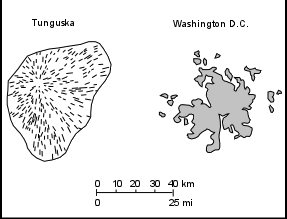Re: fireball over Russia 2013-2-15
Notice what else "The Verge" has to say:
So, I took a look at "The Verge"
Looks like one of those well-funded sites designed to take people in and help shape their ideas and opinions. In this case, however, they are right. I don't fault RT for mentioning the rumor, nevertheless.
DavidHP said:_http://www.theverge.com/2013/2/15/3991132/russia-meteorite-explosion-reported
Article with videos;
" Reports from the Russian region of the Ural Mountains suggest that a meteor may have exploded 10,000 meters above the ground this morning. YouTube videos show loud blasts and bright objects falling from the sky, and an emergency official told Reuters that "It was definitely not a plane. We are gathering the bits of information and have no data on the casualties so far." The incident occurred in Chelyabinsk, about 1,500 kilometers (930 miles) east of Moscow.
"Preliminary indications are that it was a meteorite rain," said an emergency official speaking to RIA-Novosti. "We have information about a blast at 10,000-meter (32,800-foot) altitude. It is being verified." There are conflicting reports on what happened: an emergency ministry spokeswoman told the Associated Press that there was a meteor shower, but another account given to Interfax reported a single meteorite. Citing a Russian Interior Ministry spokesperson, the AP says that over 500 people have been injured, many by broken glass
Local accounts provided to Reuters tell of burning objects in the sky followed by huge blasts that shattered windows and set off car alarms. The video above shows a bright white streak recorded from a dash-mounted camera, and below we see and hear closer evidence of the blast, with the white streak in the sky leading to a massive explosion — be warned, the video is loud. Many Russian drivers keep cameras on their dashboard in order to ensure evidence in the event of a traffic incident "
Notice what else "The Verge" has to say:
Unconfirmed reports from Russia Today, a less than reliable source at the best of times, suggest that a meteor was blown away by a surface-to-air missile salvo, but there's little evidence of that from the videos we're seeing.
So, I took a look at "The Verge"
The Verge was founded in 2011 in partnership with Vox Media, and covers the intersection of technology, science, art, and culture. Its mission is to offer in-depth reporting and long-form feature stories, breaking news coverage, product information, and community content in a unified and cohesive manner. The site is powered by Vox Media's Chorus platform, a modern media stack built for web-native news in the 21st century.
Masthead
Editorial Staff
Editor-in-chief, co-founder: Joshua Topolsky
Managing Editor: Nilay Patel
Senior Editors: Dieter Bohn, Sean Hollister, Paul Miller, Chris Ziegler
Senior Reviews Editor: David Pierce
Senior Editors, Europe: Thomas Ricker, Vlad Savov, Tom Warren
Senior Editorial Producer, Video: Ross Miller
Editors: Ben Popper, Dan Seifert
Features Editors: Joseph L. Flatley, Thomas Houston, Jesse Hicks, Laura June
Senior Reporter: Tim Carmody
Reporters: Bryan Bishop, Russell Brandom, Carl Franzen, Ellis Hamburger, Nathan Ingraham, Adrianne Jeffries, Joshua Kopstein, Adi Robertson, TC Sottek, Andrew Webster
Reporter, Europe: Aaron Souppouris
Reporters, Asia: Jeffrey Blagdon, Sam Byford
News Writers: Dante D'Orazio, Amar Toor, Chris Welch
News Writer, Europe: Louis Goddard
Contributing Writers: Matt Macari, Trent Wolbe
Designers: James Chae, Scott Kellum
Social Media: Sam Sheffer
Executive Director, Vox Studios: Chad Mumm
Head of Production, Vox Studios: Kyle Kramer
Video Features Producer: Stephen Greenwood
Lead Directors: Billy Disney, Jordan Oplinger
Directors / Editors: John Lagomarsino, Ryan Manning, Sam Thonis
Director, Post Production: Marcos Bueno
Podcast Producer: Brendan Murphy
Video Publishing Assistant: Evan Rodgers
Assistant to the Editor-in-chief: Michael Shane
Editorial Operations Assistant: Leah Sigler
Director of Events, Vox Media: Nina Sokoler
Product Database Manager: William Savona
Vox Media New York Office Manager: Lorien Olsen
Interns: Joshua Cherkes, Chaim Gartenberg, Tyler Gold, Hyunhu Jang, Jacob Kastrenakes, Zinon Kyprianou, Lucas Ogera, and Louis Sansano
The Verge Founding Editorial Team: Joshua Topolsky, Nilay Patel, Joanna Stern, Dieter Bohn, Joseph L. Flatley, Sean Hollister, Thomas Houston, Laura June, Paul Miller, Ross Miller, Thomas Ricker, Vlad Savov, and Chris Ziegler
Publisher, co-founder: Marty Moe
Looks like one of those well-funded sites designed to take people in and help shape their ideas and opinions. In this case, however, they are right. I don't fault RT for mentioning the rumor, nevertheless.






